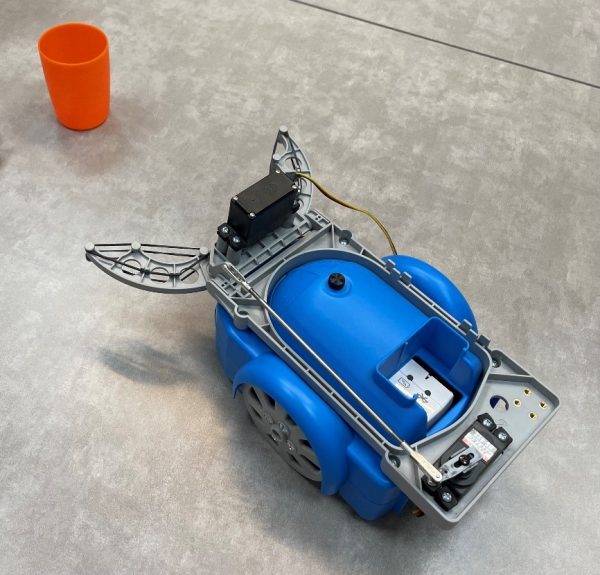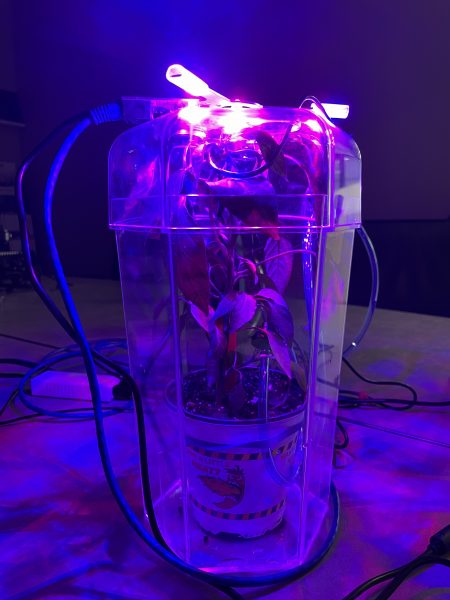Connecting Ontario’s New Science Curriculum to PASCO’s STEM Sense Products
To some degree, all technology today includes coding. With coding becoming more relevant than ever, Ontario science courses are now integrating coding into the curriculum.
integrating coding into the curriculum.
The Ontario Grade 9 science curriculum states:
Coding environments allow for rapid ideating, prototyping, testing, and evaluating as students refine and debug their projects.
One way students can apply these skills is through robotics. The PASCObot is a fun way to teach students about data, robotics, programming, and sense and control. Using Blockly coding, students can make the PASCObot move, navigate and avoid objects, follow a line or path, and many more. The PASCObot encourages students to problem solve and overcome challenges to achieve a goal.
In the Ontario Grade 9 science course, a key goal is:
Providing students with the skills and knowledge required to apply engineering design processes to help find solutions to complex problems.
The //control.Node Sense & Control Kit includes materials and instructions for six projects that use elements of the engineering design process to turn on lights, run a cooling fan, open doors, launch rubber bands, and more. The activities allow students to gain skills in designing, building, and problem-solving by writing and executing code.
I had the opportunity of trying two of the projects associated with the kit:
In the Engineering a Winch activity, students engineer a device that can lift and place down an object. In this activity, you start by putting together a pulley device using a winch wheel and a high-speed stepper motor. By measuring the circumference of the wheel, you can calculate the number of rotations required to move the string and magnet a certain distance to pick up a paperclip. Using Blockly coding, students have to find a way to program the wheel to rotate according to the measurements taken.
The Nightlight activity teaches students how coding with loops and conditions can be used in a real-life setting. By covering the light sensor on the //code.Node, students can analyze how brightness is affected by looking at the live data on SPARKvue. This provides students with data that they can interpret to create code that will turn the light bulb on when brightness is below a certain percentage.
A key change in the biology portion of the Grade 9 science curriculum is:
Students will have an opportunity to learn about the many factors that contribute to ecosystem sustainability, including soil health, air and water quality, biodiversity, and succession.
The Greenhouse Sense & Control Kit provides experiments that encourage students to gain hands-on experience in each of these topics. Students can design, build, program, and study their very own greenhouse.
 In our experience with the Greenhouse Sense & Control Kit, we decided to design an environment for a Ring of Fire Pepper Plant. We had to research conditions that would be essential for the plant to grow. This included factors such as relative humidity, temperature, soil moisture, hours of sunlight, and how much water it needs each week. The Greenhouse Sense & Control kit provides the materials for students to design the greenhouse for the plants’ needs. Through code, you can program a fan, grow light, and irrigation system to provide the optimal conditions for your plant. This teaches students how changes due to soil, water, air, and temperature in an ecosystem can affect a plant’s growth in good and bad ways. The activities provided by this kit allow students to learn about ecosystem sustainability firsthand and in real-time.
In our experience with the Greenhouse Sense & Control Kit, we decided to design an environment for a Ring of Fire Pepper Plant. We had to research conditions that would be essential for the plant to grow. This included factors such as relative humidity, temperature, soil moisture, hours of sunlight, and how much water it needs each week. The Greenhouse Sense & Control kit provides the materials for students to design the greenhouse for the plants’ needs. Through code, you can program a fan, grow light, and irrigation system to provide the optimal conditions for your plant. This teaches students how changes due to soil, water, air, and temperature in an ecosystem can affect a plant’s growth in good and bad ways. The activities provided by this kit allow students to learn about ecosystem sustainability firsthand and in real-time.
